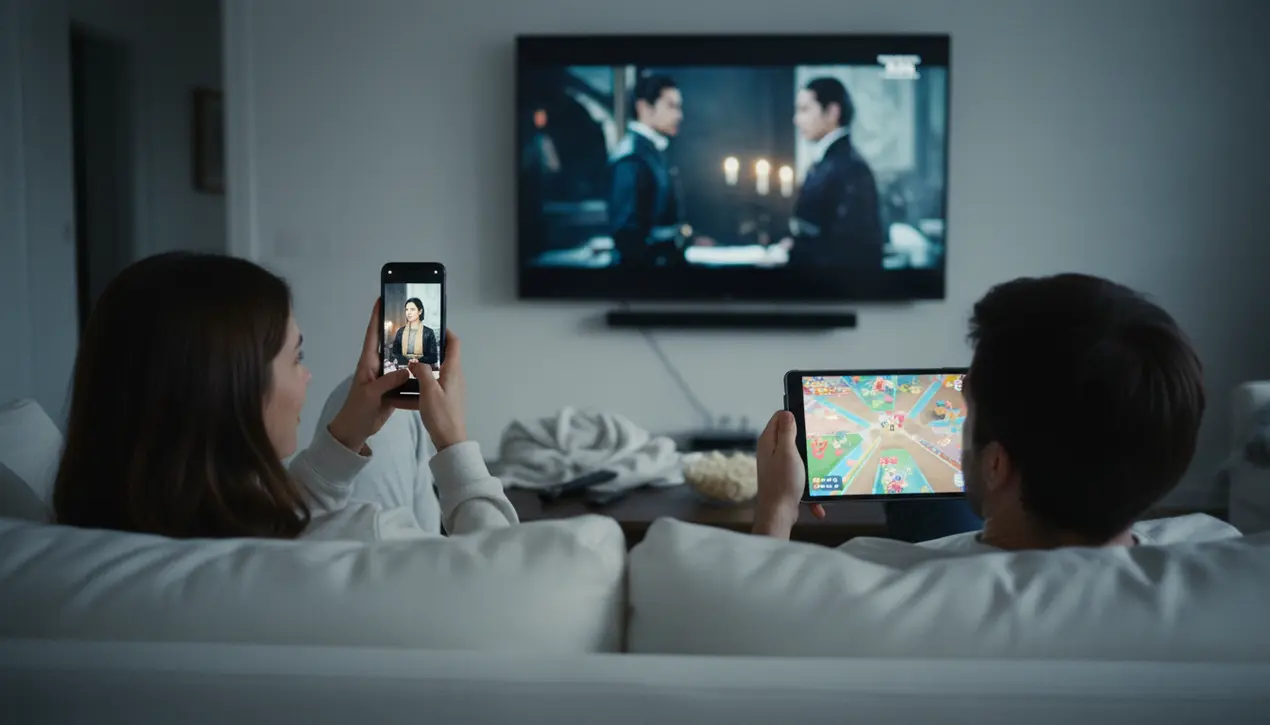
Hottest
Entertainmentculture & trends
How TikTok and distracted viewers are reshaping television.
JE
Jessica Stone
6 hours ago7 min read3 comments
The television landscape is undergoing a seismic shift, and honestly? It's all happening right in the palm of your hand. We've all become masters of the split-screen life—binge-watching the latest Netflix drama while simultaneously doomscrolling through TikTok.Hollywood has taken notice, and the response isn't just a raised eyebrow; it's a full-blown content revolution. Enter the vertical micro-drama, the snackable, scrollable format that's capturing what's left of our fractured attention spans.Funded by heavyweights like Kris Jenner and Disney, these hyper-condensed episodes, sometimes as brief as 45 seconds, are engineered for maximum impact with wildly dramatic premises designed to hook you before you can even think about swiping away. But the influence of our distracted viewing habits runs deeper than just a new format.A report from n+1 revealed that Netflix executives are reportedly advising screenwriters to have characters explicitly verbalize their actions, a directive aimed squarely at the viewer who has the show on in the background. This isn't about creating art that demands your full focus; it's about crafting content that can be passively absorbed while your main cognitive load is dedicated to a viral dance challenge or a Mr.Beast video. The industry's internal dialogue, as explained by Puck News correspondent Julia Alexander, frames this not as 'dumbing down' but as a pragmatic acknowledgment of a new competitive reality.The 'second screen'—your phone—isn't just a distraction; it's the primary competitor for every streaming service's subscription dollars. This battle for eyeballs is fundamentally reshaping the kind of stories that get greenlit.The prestige television golden age of the early 2000s, which attracted A-list movie talent to the small screen, is being crowded out by what Alexander candidly calls 'unintentional slop. ' This isn't a conspiracy to make content worse, but a consequence of the sheer volume required to feed the algorithmic beast, with platforms churning out more to compete with the infinite scroll of YouTube and social media.The rise of generative AI is set to accelerate this, flooding our screens with even more low-cost, easily consumable fare. Yet, amidst this seemingly bleak outlook, there's a glimmer of a cult-classic future.As we enter an era of infinite content, the truly great, well-crafted stories won't disappear; they'll simply become more precious. The prediction is that streaming services will eventually bifurcate, with some embracing the slop while others, like a potential future Apple TV+ or a premium-tier Netflix, will pivot hard towards high-quality, prestige programming that audiences are willing to pay a premium for, perhaps $40 or $50 a month.It’s a market correction waiting to happen. The constant, low-grade entertainment from our phones may be winning the daily attention war, but it will never extinguish our fundamental human need for a truly gripping narrative, a beautifully shot scene, or a performance that gives you chills. The industry might get smaller and more jobs might be lost in the transition, but the art of powerful storytelling will find a way to endure, even if we have to dig a little deeper through the algorithmic noise to find it.
#TikTok
#micro-dramas
#streaming
#viewer attention
#television industry
#hottest news
Stay Informed. Act Smarter.
Get weekly highlights, major headlines, and expert insights — then put your knowledge to work in our live prediction markets.
Comments
Loading comments...
© 2025 Outpoll Service LTD. All rights reserved.